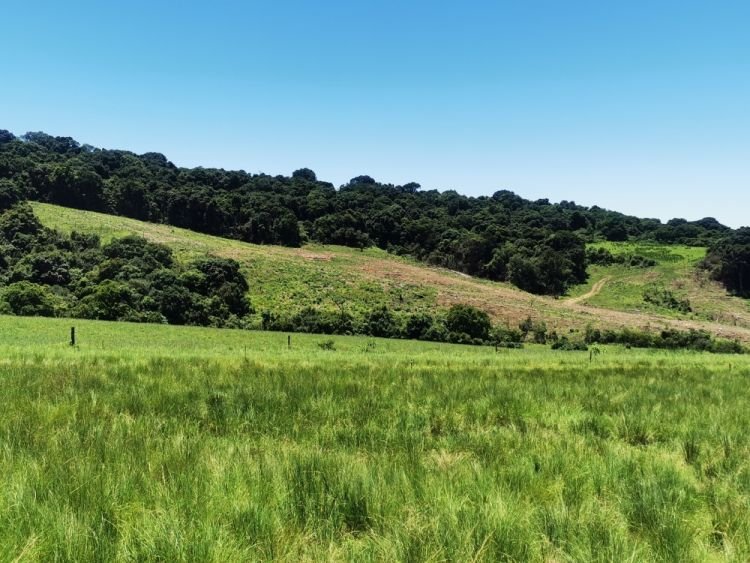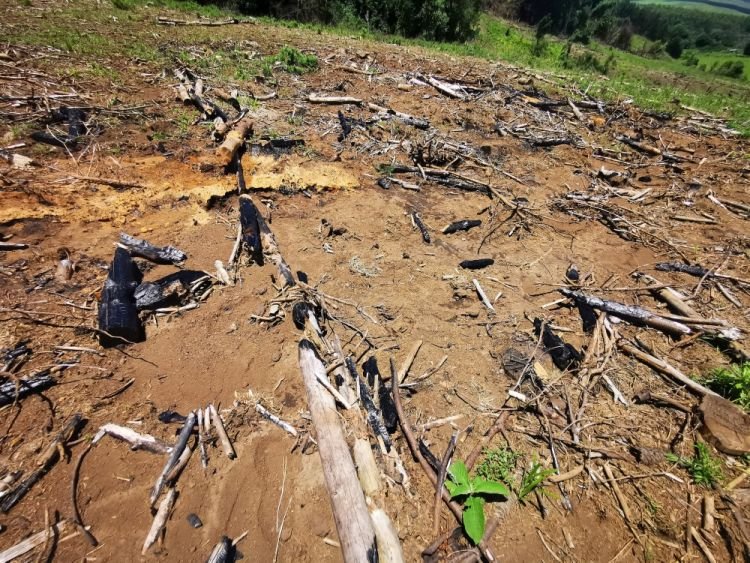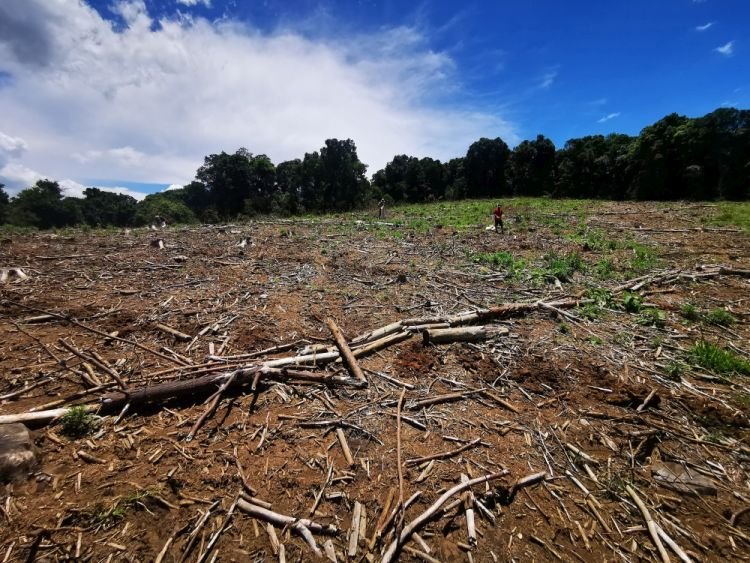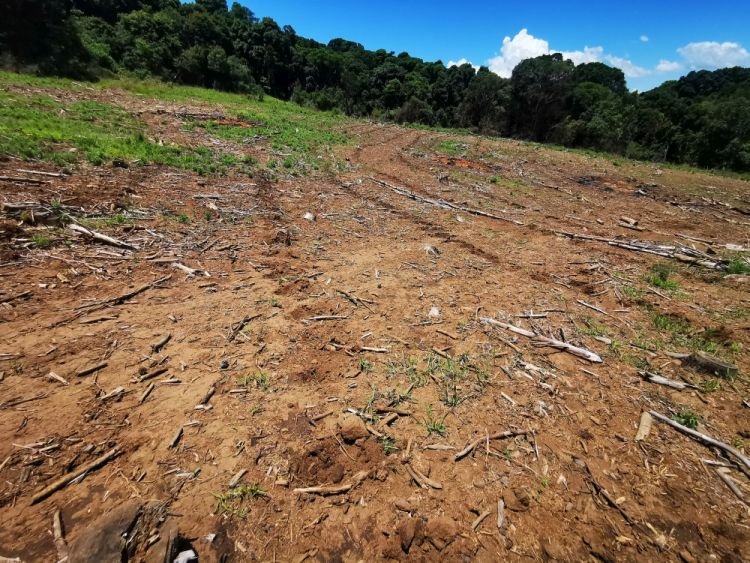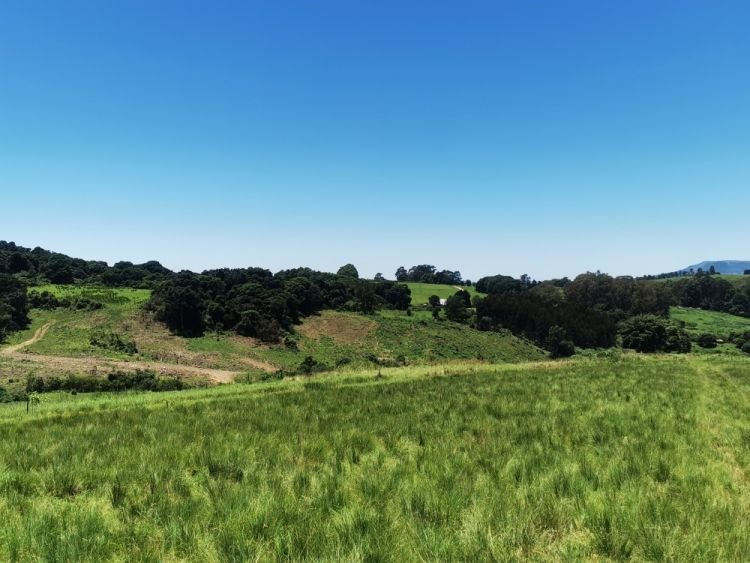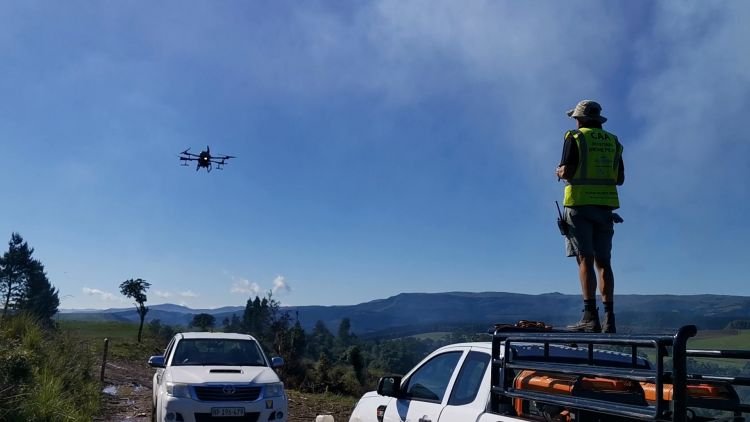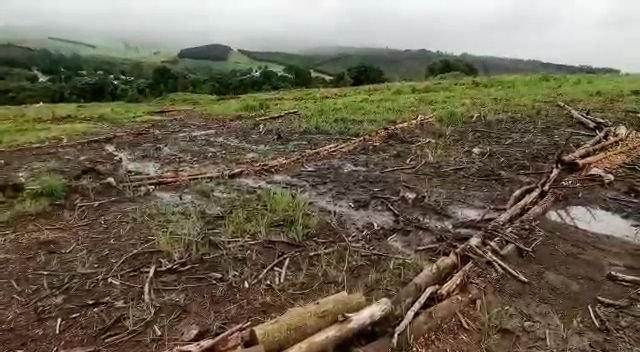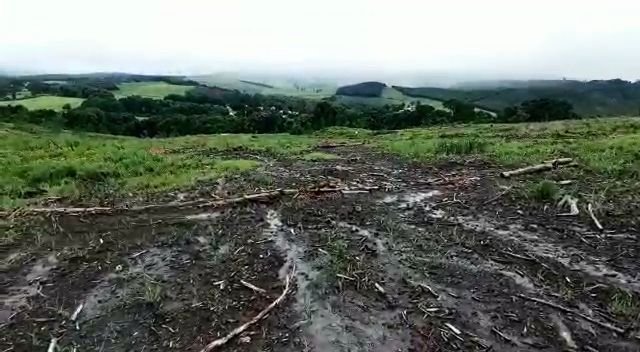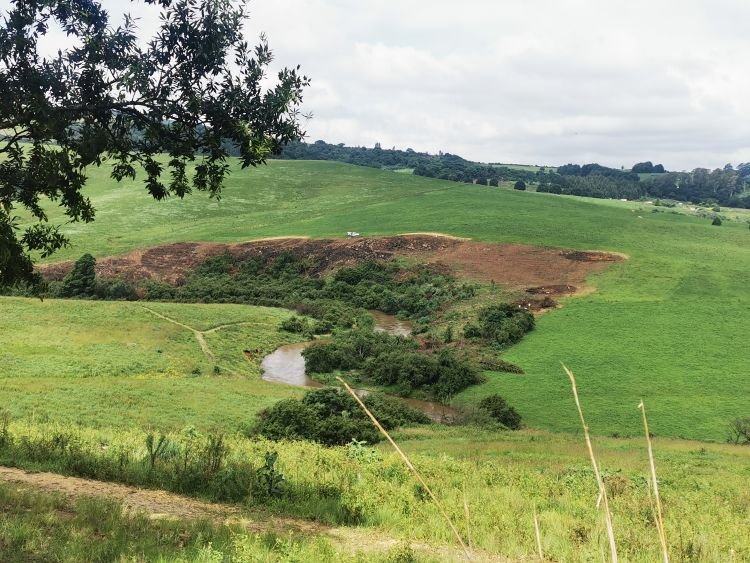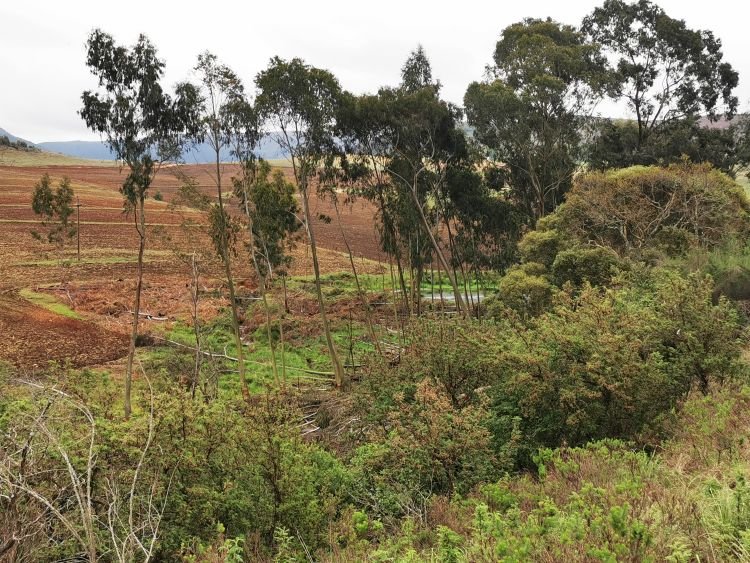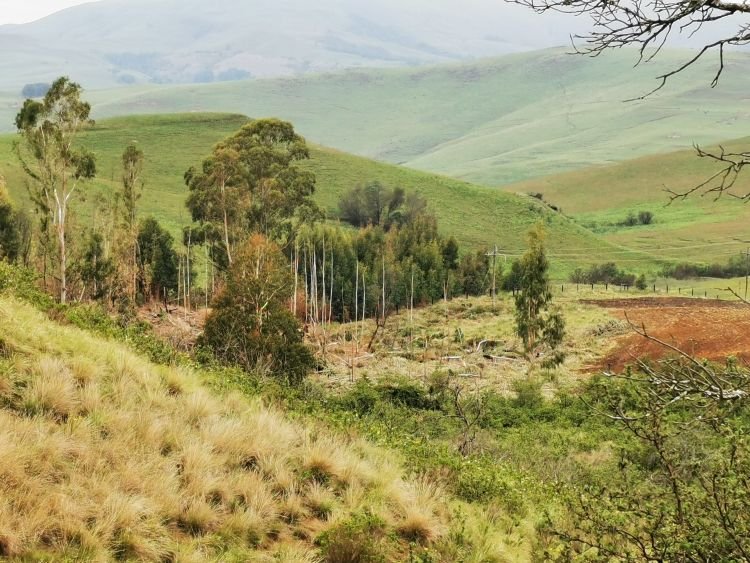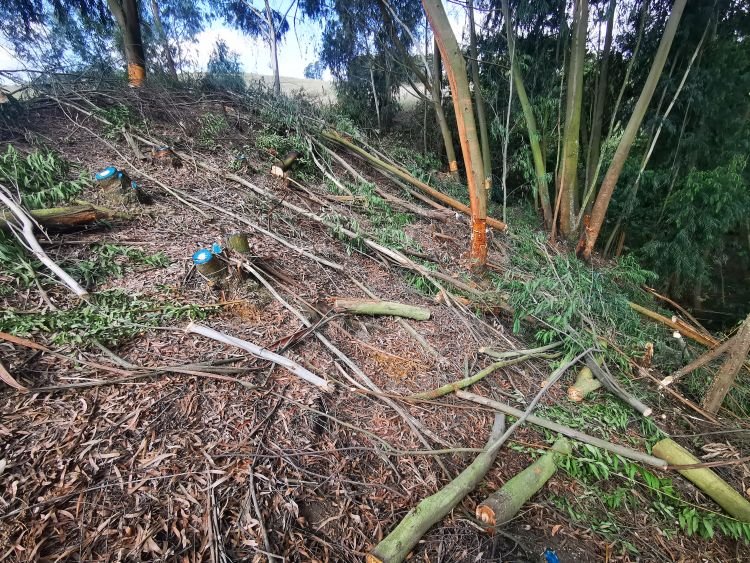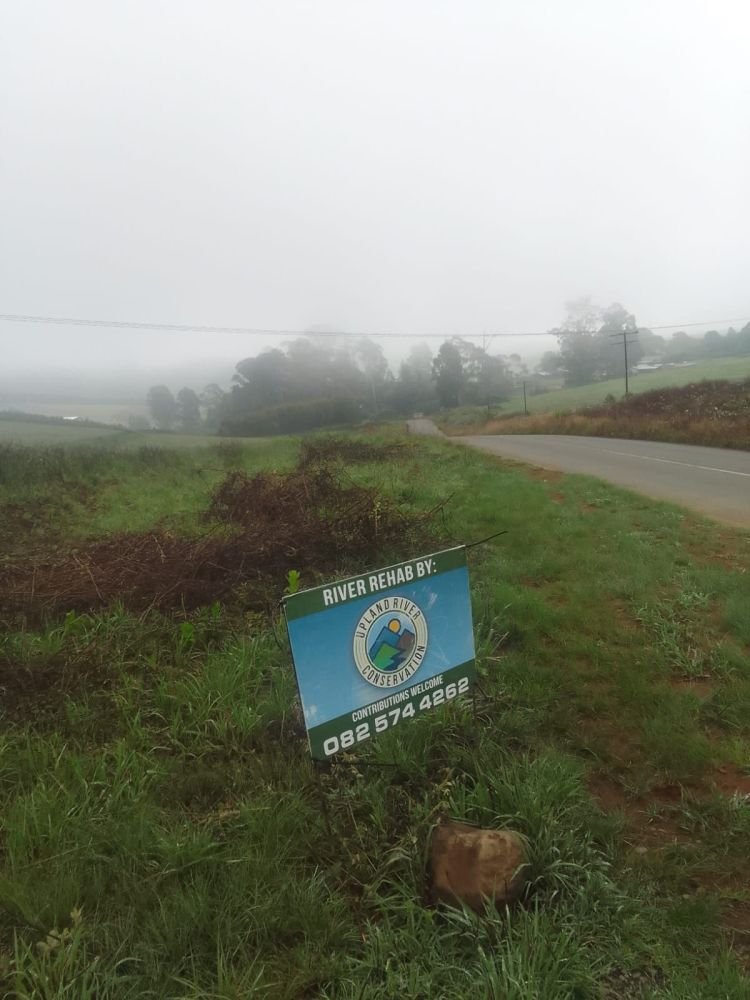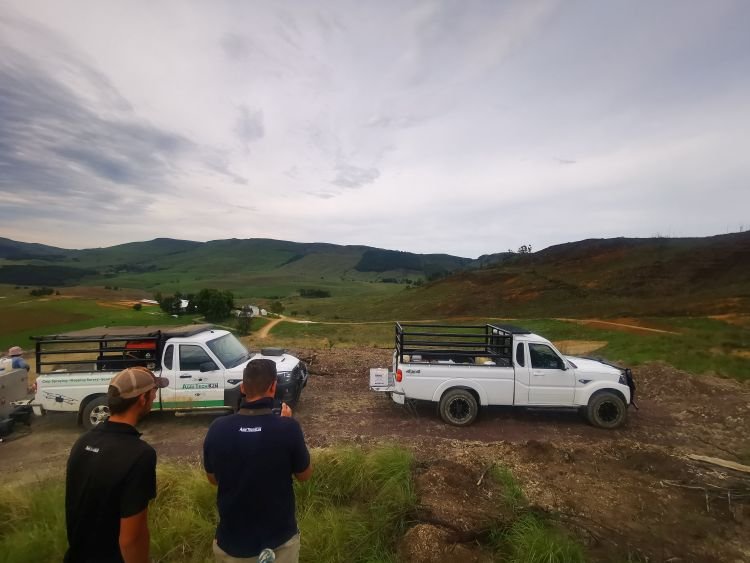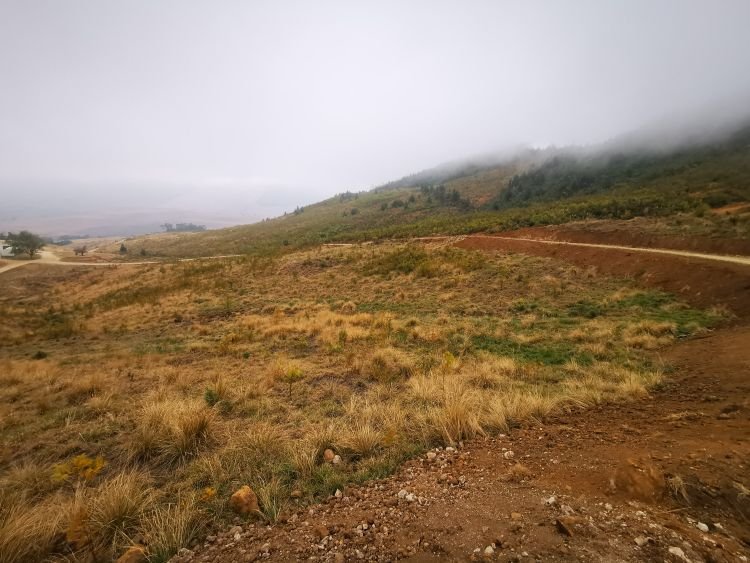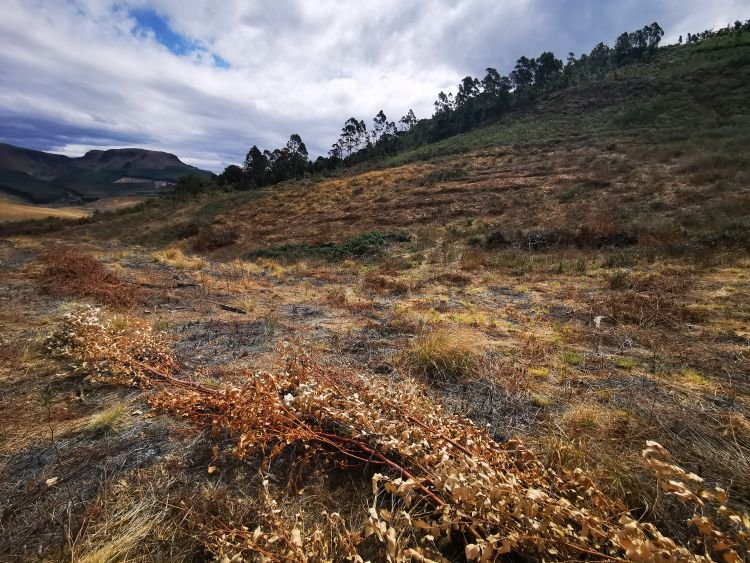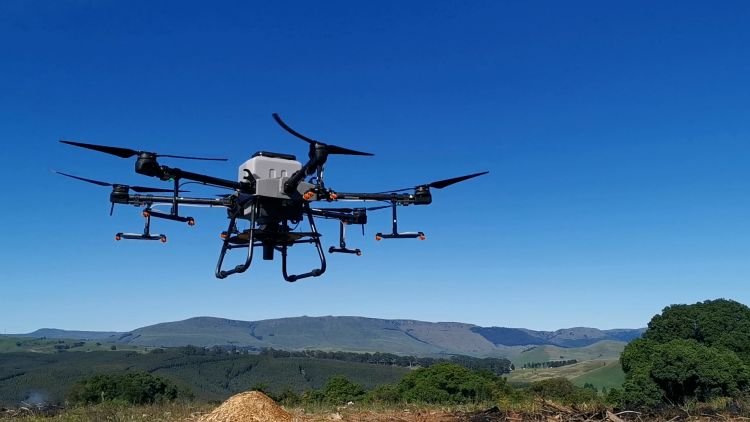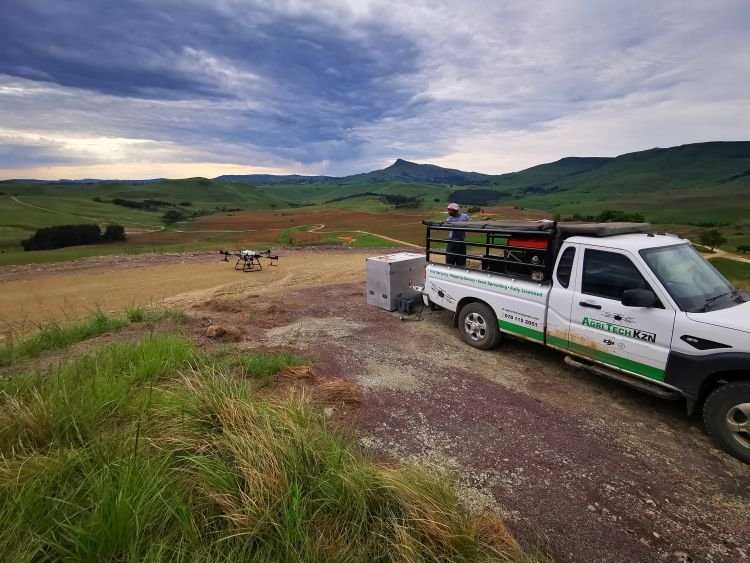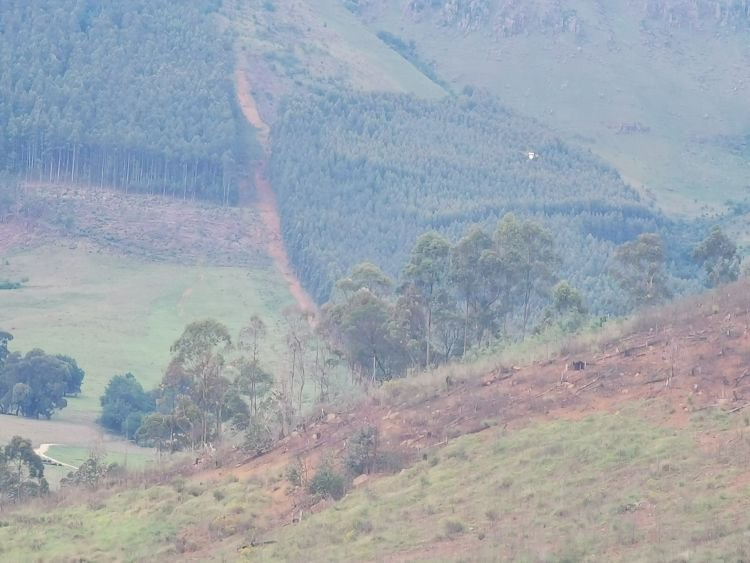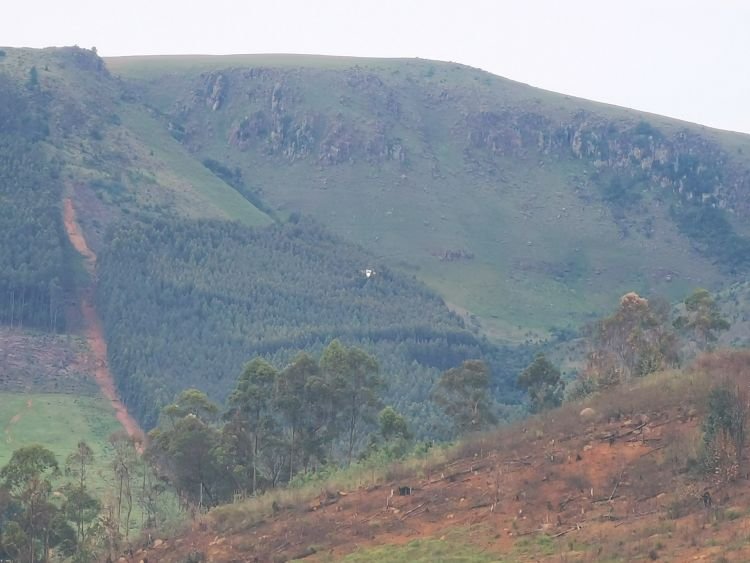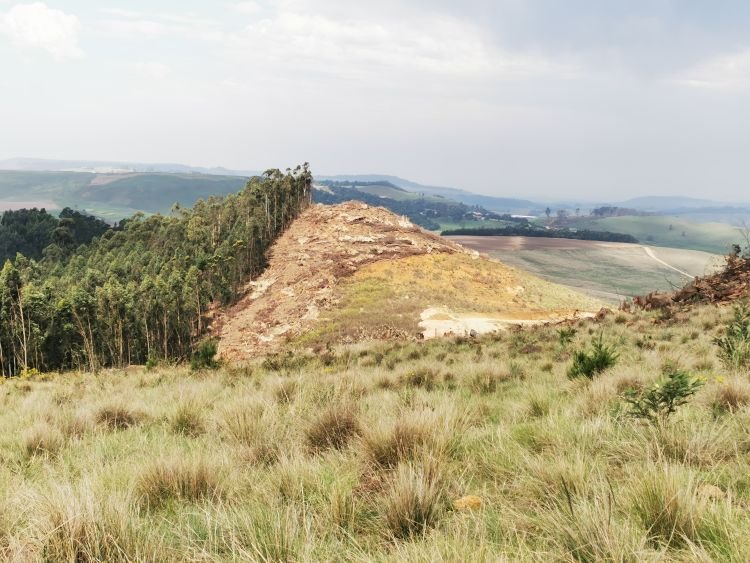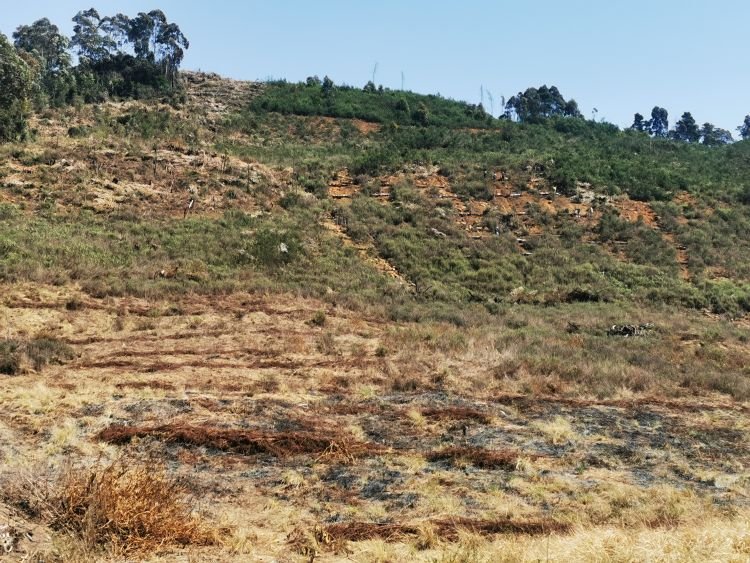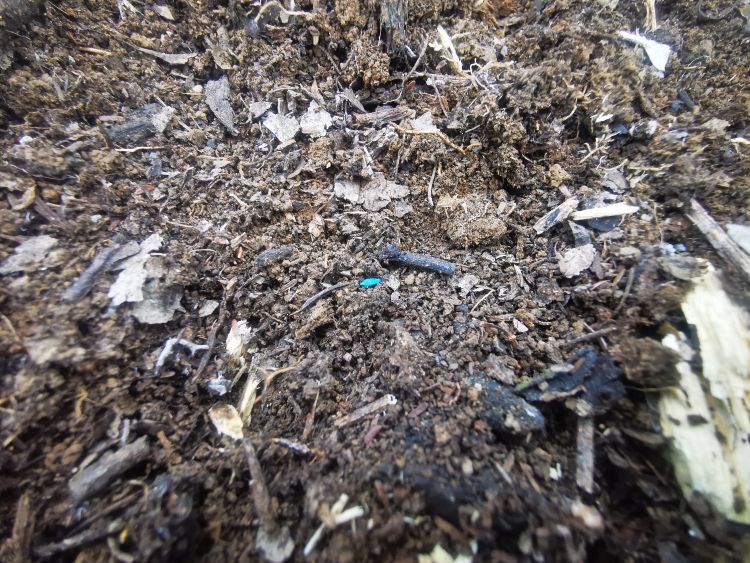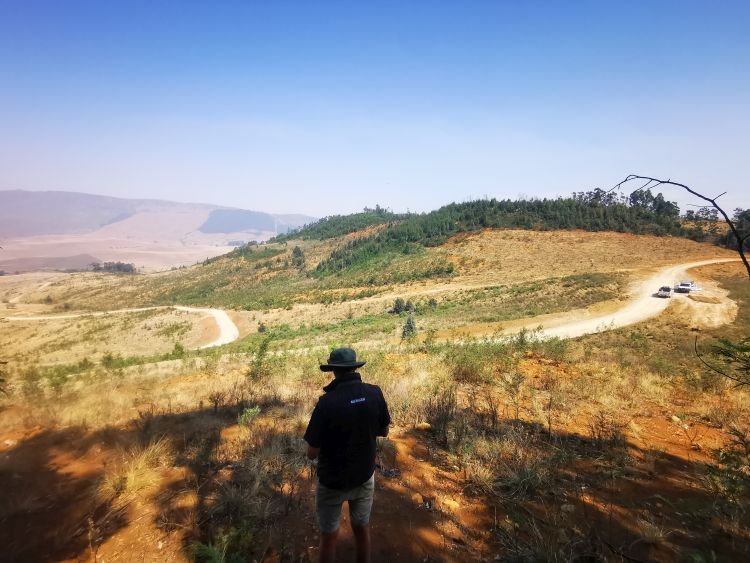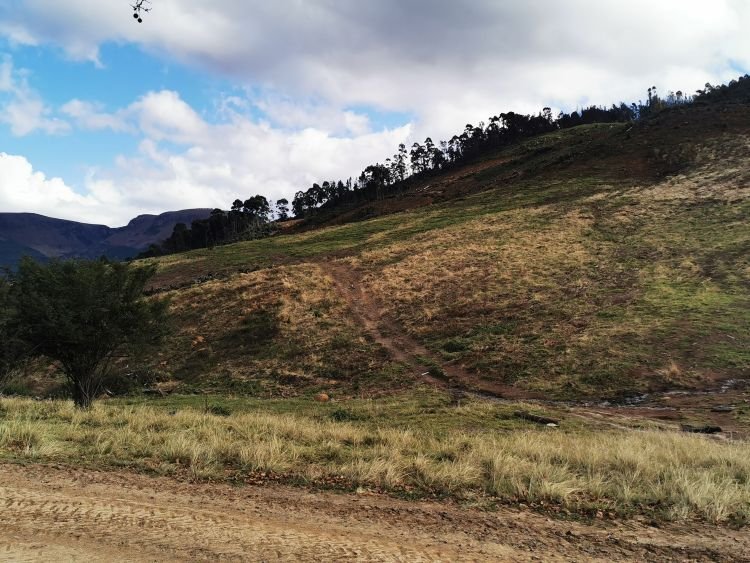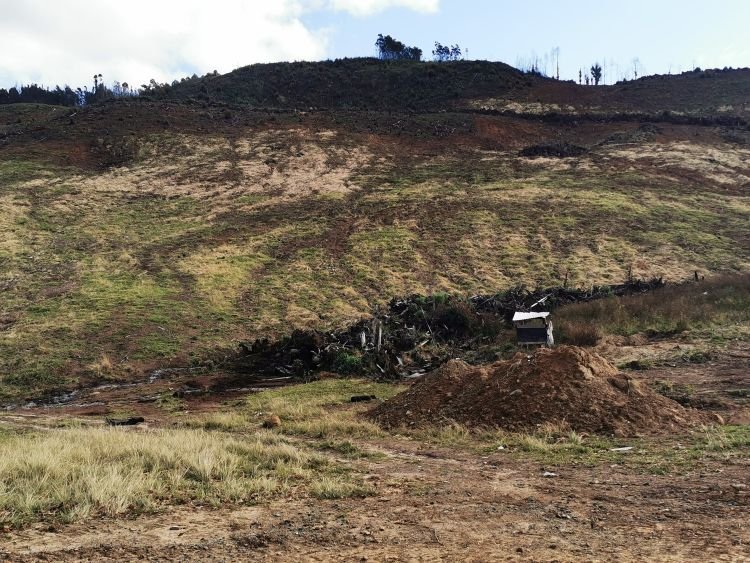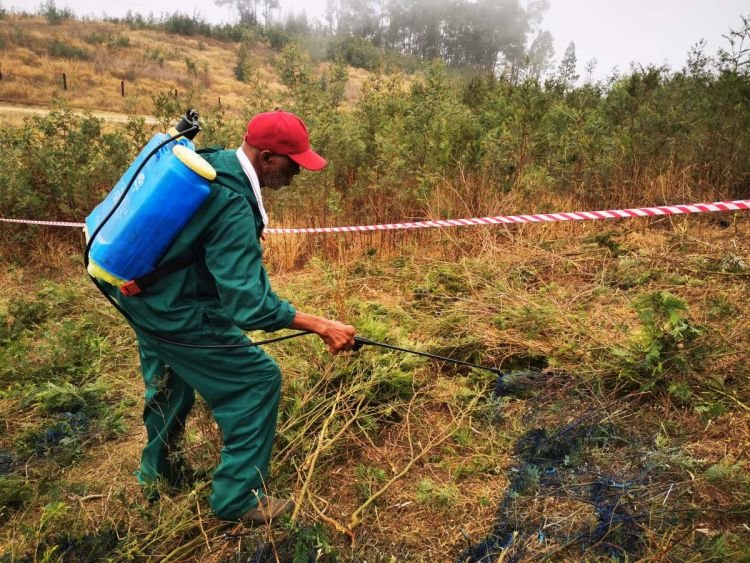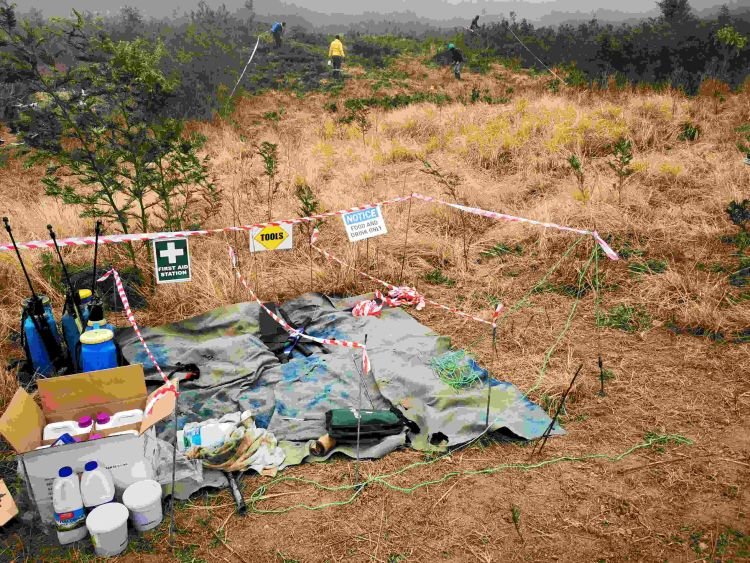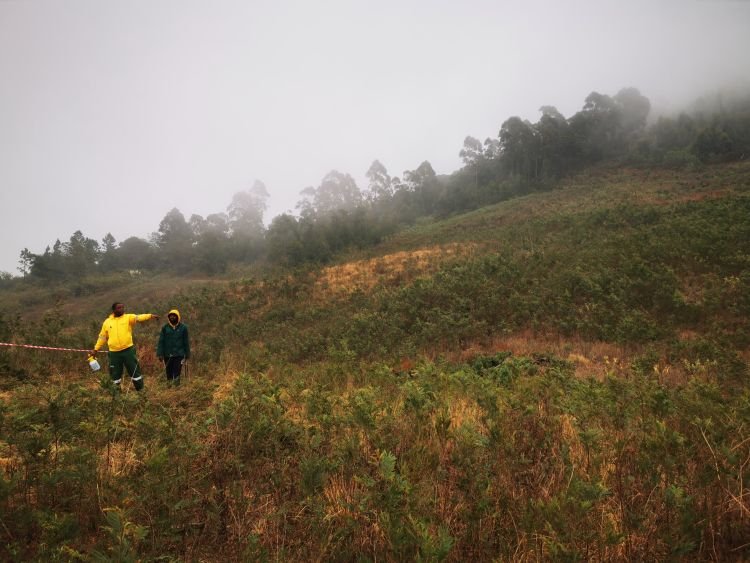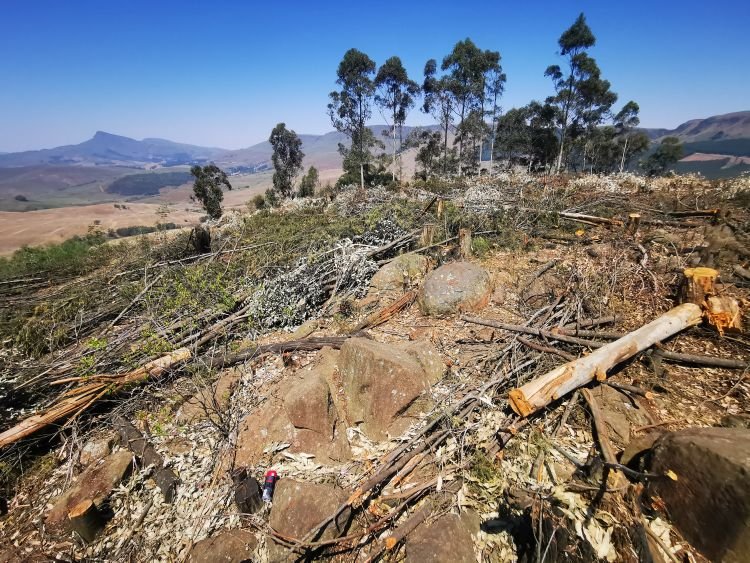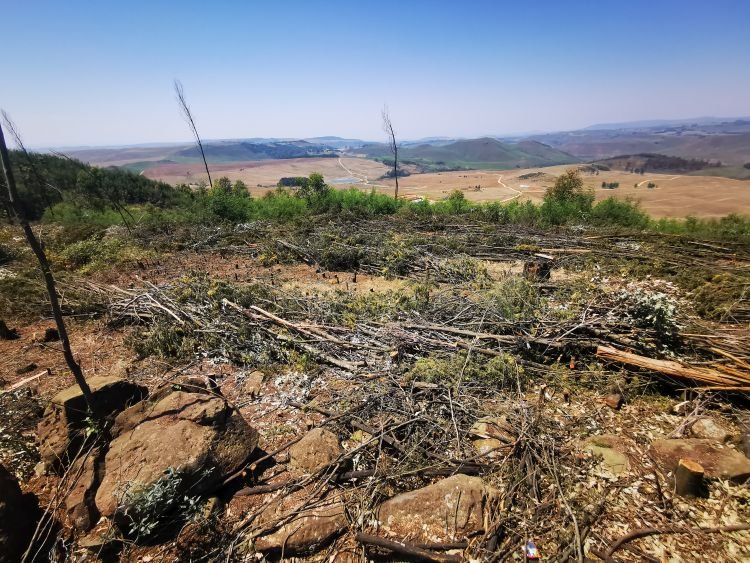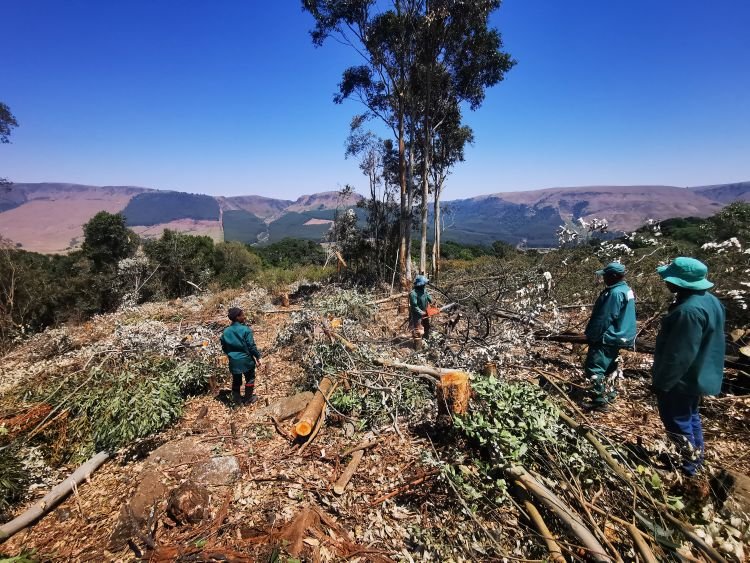The Upper uMngeni Land Rehabilitation project
This program was run in collaboration with DUCT (The Duzi uMngeni Conservation Trust), and was funded by the Caterpillar Foundation from the USA.
The project was conceived by Upland River Conservation, and represented a pilot, in which we tested a model of co-funding, where landowners contributed to the cost of rehabilitating scrub timber land, through a cash contribution, as well as reliquishing the value of that scrub timber. The concept was born on the back of good beef prices at the time of application, and in light of wavering efforts by Working For Water , and the beginnings of greater policing by DFFE on unlicensed timber.
The idea was that a farmer would relinquish the value of scrub timber (which traditional timber contractors didn’t want to touch anyway), and that he would pay in an amount in order that he would come away with more grazing.
The work was to be done by strongly mentored local contractors, who would undergo a purpose-built training exercise, based on working on farms in the KZN Midlands, performing alien tree removal and other farm services.
So many farmers have said “I would outsource this work , if only I could find a decent contractor”, and we aimed to match that to a number of local, struggling contractors who hadn’t previously managed to rise to the occassion of filling that gap.
The program was a significant success overall. This statement takes into consideration that the targeted number of acres of dense scrub timber conversion to grassland was only 60% met, but that this was supplemented by the addition of another 253 acres of sparse alien tree removal, which saw us reach 86% of the targeted annual water savings. The success is also stated in view of the significant training and upliftment of local contractors, but even more so, the lessons learned that will guide future projects.
It had been our intention to achieve the 222 acres of dense alien invasive tree areas rehabilitated to grassland, but economic factors hampered efforts. The factors included a fall in the price of beef, and high timber prices, coupled with poor economic conditions, and it prompted farmers to fell timber for their own account and not invest in the land rehabilitation, or not to act at all. The addition of extra grazing was simply unattractive given the poor beef prices, in a wet year in which grazing was already plentiful. The good timber prices prompted farmers and traditional timber contractors to view scrub timber as a valuable resource, which they had not done before. We also struggled to find secure or reliable non-traditional markets for the biomass. In this way harvesters of traditional pulp timber, who did not lock the owner into a concomitant spend on grassland rehabilitation, out-competed our value proposition, in that they allowed farmers to put cash in their pockets, rather than spend money on adding grazing.
In hindsight, the responsibility of project sales to farmers falling on the shoulders of one individual also may have hampered our ability to achieve the full acreage. This is also relevant in that we encountered a great number of landowners who were ill-informed as to the harmful affects of the alien invasive trees on water resources, the perilous state of water resources in the catchment, or the legal requirements to eradicate unlicensed woodlots. The sales effort therefore required considerable background education, and was by its very nature slower than expected, as farmers (and more so, smallholders) needed time to understand and digest what we had assumed were compelling reasons to rehabilitate scrub timber land.
From a seasonal point of view, efforts were hampered in the first summer, by the highest rainfall on record, making farm tracks impassable, and conditions unworkable.
With the training of contractors, we quickly abandoned the recruitment of purveyors of professional training, having found that their material and context was often far removed from the realities of a rural contractor working in a commercial farming economy. Course material was therefore purpose built and delivered. Notwithstanding this, we did experience that the ability of contractors to implement what was learned in a lecture setting was disappointing. Furthermore the propensity of contractors to delegate work, leave their work sites and attend training during a working week proved difficult. We also came to understand that many contractors attended training only because of the prospect of attaining paying work, and that they quickly abandoned hope of being given paying work, and thus stopped attending training. For those who did attend a high percentage of the lecture-based training, the value of mentoring those at work as a means of cementing classroom knowledge, was quickly comprehended.
On the positive side, we did secure work with four farmers who were engaged and willing and in so doing we achieved 144 acres of fully remediated landscape, with erosion control and planting of dense grasses, exactly as envisioned. We also had no fewer that 25 contractors sign up with the program, all of whom gained at least some beneficial knowledge, 9 of whom obtained work, and 5 of whom achieved official endorsement in the community. The employment created put some 65 otherwise unemployed people to work for a time.
Furthermore the extension of the program into a second season by the Caterpillar Foundation, together with the identification of eligible sparse timber areas, prompted us to label a new parcel of work as F.A.R.M. (Furthering Arterial Rehab and Maintenance)and continue with the budget. With this component we essentially filled the gap left by Working for Water in recent years, and we attended to road verges and river/stream banks, which allowed us to achieve considerable water savings, offer mentored employment, and further our credibility amongst the landowners.
This second phase of work was conceptualised in a way that allowed us to further our alien invasive tree eradication, and associated water savings, without being seen to abandon or back-track on our original co-funding formula. We felt it remains important to introduce subsidised land rehabilitation, rather than capitulate into performing work for free. Our objective of weaning both our contractors and landowners off low quality, low benefit alien invasive tree eradication remains in tact, and this project has served to bring into focus the challenges and their potential solutions.
We have learned that any such projects in the future should be preceded by a basket of landowner information initiatives, in which the legal and environmental costs of allowing unlicensed alien invasive tree infestations to endure, are brought into focus. We also learned that such interventions would need to vary in nature to effectively reach two distinct markets, namely commercial farmers, and smallholders, whose profiles and value-drivers are distinctly different.
From the perspective of the training of contractors, we learned that there is a dearth of suitable training materials and solutions for this type of contractor training in a rural agricultural setting. The training content had to be developed specifically for this program but is not wasted as it will serve future projects very well. In particular we developed a pricing method (on paper as well as on MS Excel) , which enables contractors to enter the land area, or man days, and distance from their base, and quickly arrive at a well considered price, with decent, respectable margins. We also came to appreciate that the training needs to be more heavily supplemented with on-the-job mentoring, with real-life examples on work sites brought to the fore as learning opportunities.
We are grateful to our partners (DUCT), and the Caterpillar Foundation for making this project happen. We are also grateful to the gracious landowners and occupants of the upper uMngeni catchment, for listening, understanding, and working alongside us for a better environment.


